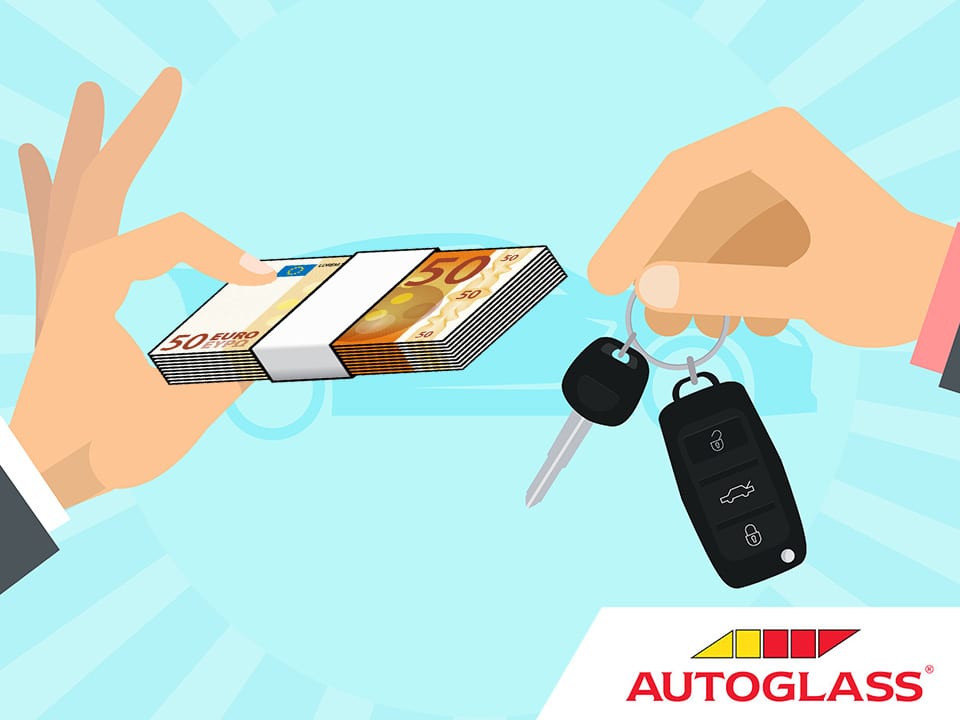
Essential tips for buying a used car
The private marketplace for used cars can be a minefield, the right tips for buying a used car are invaluable when making a second-hand purchase. For every new car bought in Ireland almost 2.5 second-hand cars are bought. The decision to purchase your used car privately as opposed to from a dealership is undoubtedly worthy of consideration. The complexity of cars themselves, with innumerable sensitive, moving parts, mean that it is not always immediately obvious what to look for when buying a used car. This is especially true when purchasing the used car outside of a trusted dealership.
What to ask when buying a used car
Knowing what to ask when buying a used car is key to making an informed purchase. Run these questions past the seller and see what they have to say…
Can I see the Logbook?
This is an obvious one. When buying a used car, you will need to see a Logbook. This should always be the first question you ask at a viewing, as the Logbook will quickly prove the legitimacy of ownership.
Has the car ever been in a crash?
After you’ve had a look at the logbook, ask the seller if the car has ever been in an accident. This may catch the seller somewhat off guard, but the nature of their response can be a good indicator of honesty. Establishing the truthfulness of the seller is a great tip when buying a used car.
Is this the original paintwork?
This serves the same purpose as the last question. You are looking to establish the trustworthiness of the seller in advance of our next question.
Does the car have a full service history? Can I see it?
Provided the seller has the correct documentation, you should now be able to prove if the last two answers you received were totally honest. A full service history is the best way to know if the car has been cared for consistently. A full catalogue of work done to the car thus far is also a great means for getting a sense of the car’s reliability over time.
Does the car have in-date NCT?
The NCT is compulsory and it is the responsibility of all motorists to ensure that their car has an up to date NCT Certificate. If a car is approaching its NCT deadline and somebody is selling, they may well be concerned about if the car will pass. A car that recently passed the NCT will, of course, command a higher price than a used car with the NCT looming.
How many previous owners has the car had?
You should be able to find this information in the logbook, but it’s always a telling question to pose. If there has been a lot of owners, it’s unlikely that all of them took consistently excellent care of the car. One or two owners is preferable. The fewer the owners, the greater chance the vehicle is in good nick and stands to hold its value.
Why are you selling this car?
An obvious question but an important one! If the used car is in perfect working order, why sell it? Of course, there are plenty of legitimate reasons. They could be upgrading, have been offered a company car or need a larger vehicle for a growing family etc. But it’s wise to put the seller on the spot with this question and see what they might let slip…
Can you reduce the price?
Nothing ventured, nothing gained! Nobody ever advertises at the rock bottom price. Try and start low and arrive at a price that all parties are satisfied with.
What to look for when buying a used car
One of the most crucial tips for buying a used car is to know what to look for. Knowing what to look for when purchasing a second hand car is the first step towards investing in the right car for you. If you know what to look for – cosmetic imperfections can quickly reveal potentially more serious issues with the car.
Paintwork
You should always try to arrange to meet the used car seller on a dry day. Water on the body of the car can serve to disguise rough paintwork or chips from loose stones. When viewing the car, you should take a few steps back and consider how sunlight reflects off the car’s body as a whole. The color of the car’s bodywork should remain consistent throughout. If you find that the paintwork is not uniform, this may suggest that the car has been crashed and repaired cheaply. When purchasing a used car – crash damage should always trigger some alarm bells.
Paintwork can also give away more subtle clues about a car’s history. Open the car’s door and inspect the paint door frame brackets that bolt the door to the car. Does the paint on the brackets match the factory paint job? If not, the door has likely been replaced. If the door has been replaced after-market, then perhaps this is not the best used car for you.
Top Tip:
While you have the door open, see if the wear and tear on the car’s interior seems inline with the stated mileage. If the mileage is low but you can see a heavily worn gear stick or other cosmetic damage to the interior – the mileage clock may have been tampered with.
Rust
Rust is a major concern when purchasing a used car. The presence of rust can be an indicator that some of the car’s structure might be substantially weakened. Rust can also corrode and damage some of your car’s most essential internal components. Parts damaged by rust can be rendered wholly useless and need replacement. Knowing how to recognise and assess the seriousness of rust is one of our most important tips for buying a used car.
When checking for rust, it’s best to start at the car’s underside. The bottom of the car is usually the first place to suffer from rust. Unfortunately, this is also an area of the car that contains a slew of important pieces. For this reason, ideally, you would inspect the used car when it’s on a mechanic’s lift. Common rust spots include the frame rails, which run underneath a car’s doors on each side, the exhaust, the wheel wells, the suspension and essentially any underside components made of metal.
You should be sure to check the car’s doors along with the areas surrounding the windshield and rear windshield. If you spot any exterior paint bubbling, it’s likely an early indicator of rust. If the car’s rust issues appear to be serious, it might be best to reconsider the purchase.
Top Tip:
If you encounter small rust issues, no need to worry too much. Minor problems with rust can be fine if dealt with quickly and before they’ve spread. While it is advisable to consult a professional about rust, you can usually remove small rust spots by sanding them away.
The Seller’s Demeanor
This is, of course, one of the most open to interpretation tips for buying a used car. But, when dealing with a private seller, their approach to the sale can speak volumes. If the seller seems eager to rush the sale or unwilling to answer straight forward questions – this could indicate that they’re not being entirely honest about the car’s condition. Tell the seller that you require some time alone to inspect the car – if they are hesitant, then perhaps you should reconsider your purchase. Suggest to the seller that you may have a mechanic give the car a once over. If the seller is unwilling to have a third party look at the car, they may well have something to hide.
What to check when buying a used car
The first step to making an informed decision in purchasing a second hand automobile is to know exactly what to check when buying a new car. Run through this comprehensive list and ensure all is as it should be with your prospective purchase.
- Check that all the lines of the car’s bodywork are uniform.
- Examine for any signs of repainting. Overspraying on window rubber or inconsistency in coloring across the body’s different panels. Repainting is usually a sign that the car has been crashed.
- Check for uneven wear on the car’s tyres. Uneven wear suggests that the tyres may be misaligned, which can be emblematic of more serious issues.
- Check for different or aftermarket headlights. Replacement headlights could suggest the car has been in an accident.
- Carefully inspect the pedal rubbers, gear stick and steering wheel for any signs of wear.
- You should thoroughly inspect the odometer for any signs of alteration or interference.
- Take a moment to check that the keys provided work on all 4 doors and that there is a spare set.
- You should also check all the the keys provided in the ignition. Ensure that all of the keys can start the ignition. Sometimes cut keys are not the correct kind of “transponder key” required to work with the car’s ignition.
- During your test drive, if possible, get the car driving in every gear.
- During your test drive, you should also check that all lights, indicators and electrics are performing as they should.
- Ensure that all the car’s seatbelts are in full working order.
- For extra peace of mind use Cartell.ie to check the car’s history, mileage and ensure the vehicle isn’t subject to any outstanding finance.
In Conclusion
As we’ve seen, there are no shortage of tips to consider when buying a used car. We hope our list of tips for buying a used car serves you well in the second-hand car marketplace. When you do your research and ask the right questions, you’re much less likely to run into any nasty surprises after you’ve made a deal. Don’t forget to check back with the Autoglass® blog regularly for more tips, checklists and explainers like this one.
Book an appointment now
For a quick and easy way to make an appointment book online now.

